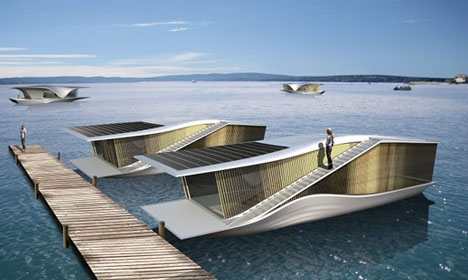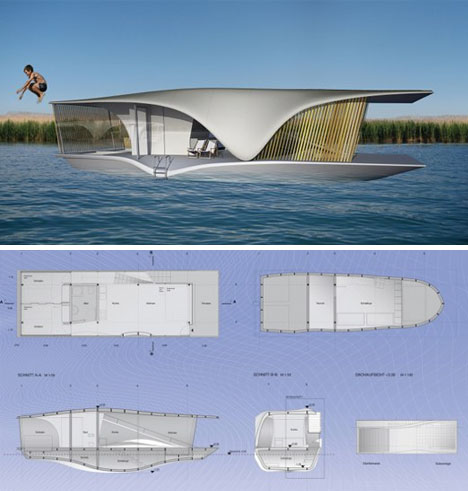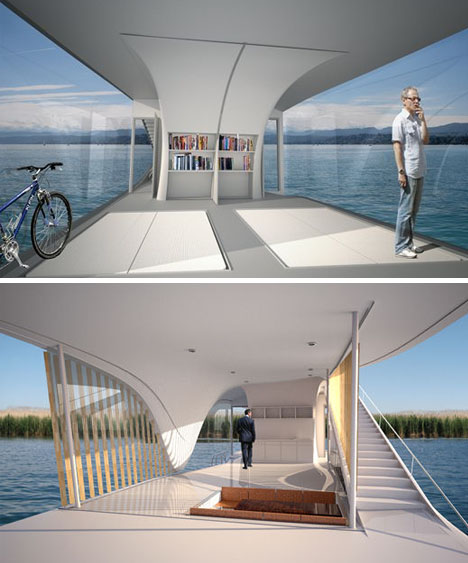

Designed by Polish architecture students Ryszard Rychlicki and Agnieszka Nowak, ‘Capture the Rain’ aims to harvest enough rainwater to supplement the daily needs of its 500 residents. Calculating the amount of water consumed by one person on a daily basis and comparing it to average annual rainfall in New York, the designers determined that with a large enough roof surface, they could reduce water usage by over 25%.

The core of the building is essentially a funnel, with a concave rooftop that acts as a pool for rainwater. Beneath the roof is large reservoir, from which water is sent into reed fields for natural filtering. The gutters that swirl around the exterior of the building, modeled on the ribbed surface of a leaf, collect additional water which is pumped from an underground tank up to the rooftop filtering system.

The designers imagine that this harvested rainwater could be used for such purposes as cleaning, watering plants and flushing toilets. Municipal water would be reserved for drinking, cooking and bathing. Such designated usage, say the architects, could help Americans get unsustainable water consumption habits under control.



